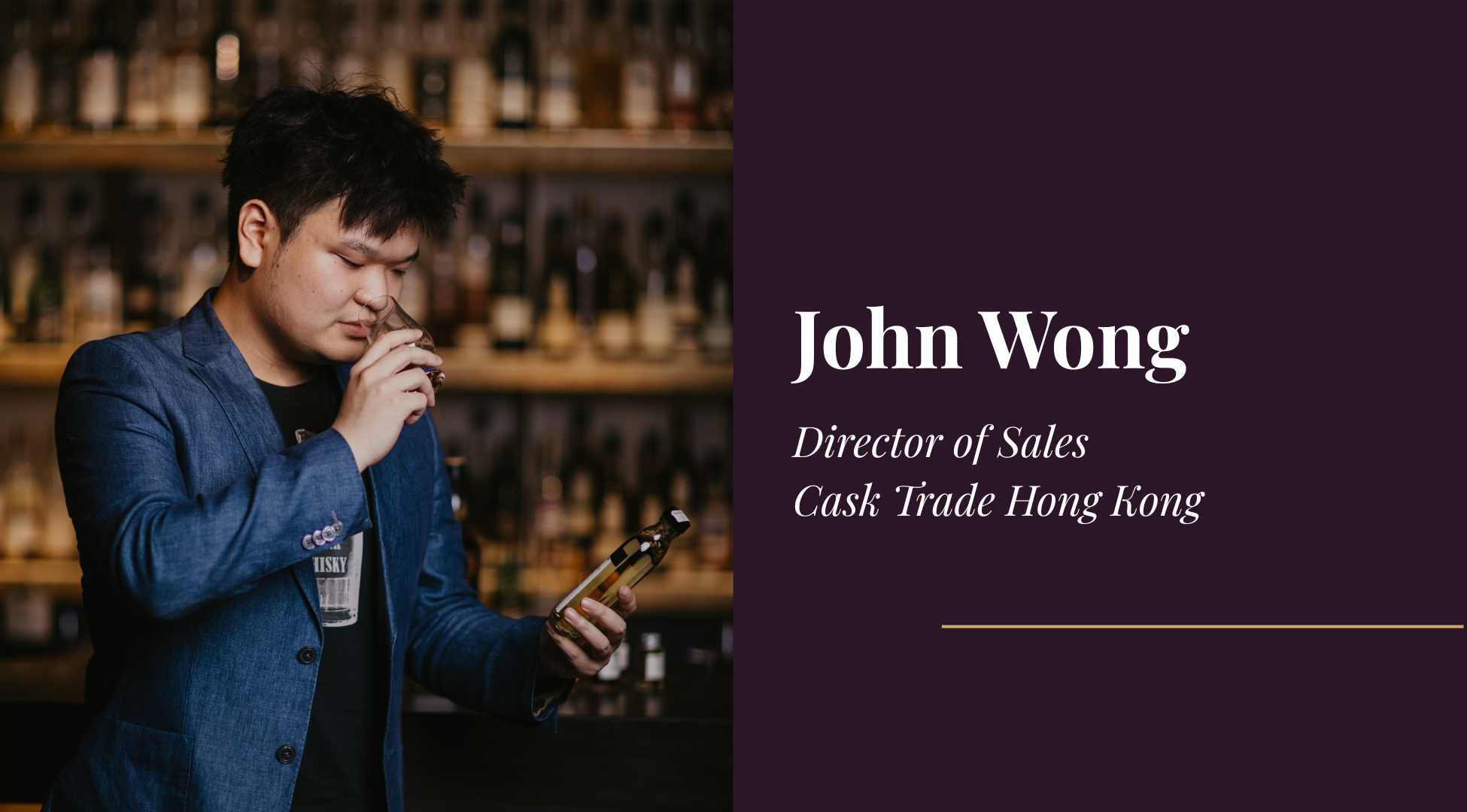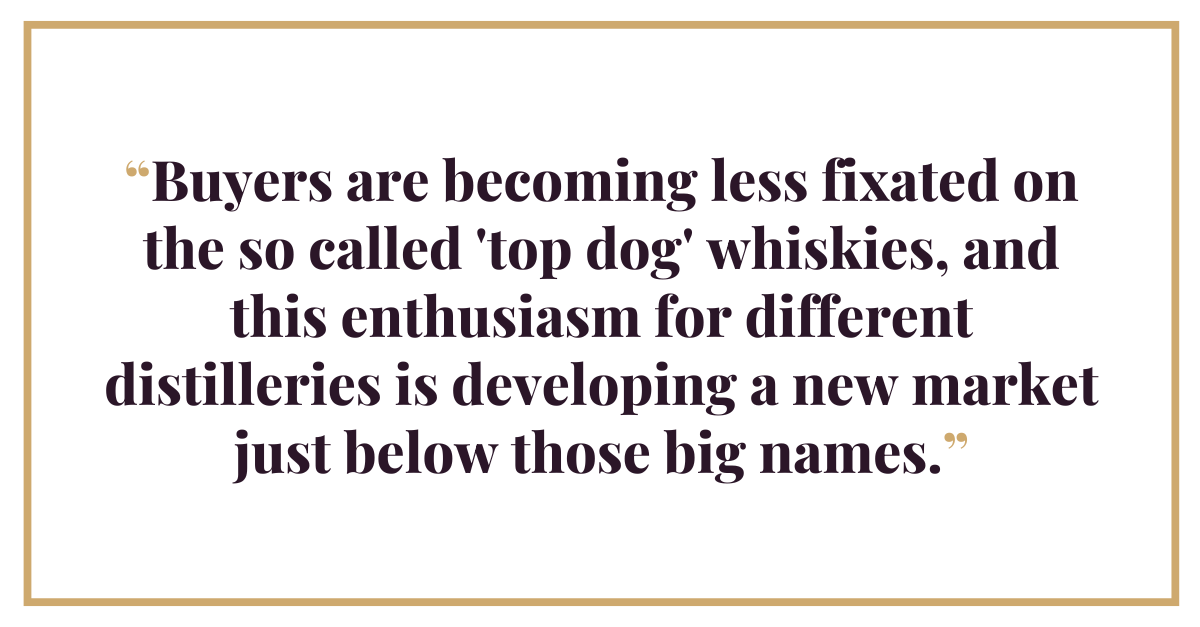How Asia is Redefining The Luxury Whisky Market
Cask Trade
Table of contents
- Cask Trade Hong Kong
- The Background of Whisky In Asia
- How Do Asian Investors Discover Whisky?
- What Flavour Profiles Are Preferred?
- My Personal Favourites
- Key Takeaway
- Working with Cask Trade
Cask Trade Hong Kong
Cask Trade's representative at the Hong Kong office, John Wong, offers his expert insight into how parts of the Asian market operate within the world of casks.

The Background of Whisky In Asia
Scotch's history can be traced back to 1496, but alcohol was being distilled a millennium earlier in China and India. So it is impressive to see whisky embraced in places with such a rich heritage in spirits. More than that, Asia is at the forefront of luxury whisky, as evidenced by the priority distilleries place on territorial exclusives, Lunar New Year editions etc. But, to understand the Asian market's approach to luxury and rare whisky, you have to first differentiate between cask investors and whisky drinkers who invest in casks.
You'll find highly educated and enthusiastic connoisseurs of flavour at local bars or specialist spirit shops. They have a phenomenal knowledge of the world of whisky and are huge advocates of their favourite distilleries. If they are going to buy a cask, they will likely already know what they want.
Conversely, cask investors will often prioritise return over distillery preference when purchasing. However, even for these investors, this return is not always thought of exclusively in monetary terms. There are plenty of other, more traditional investments that people will look to before whisky for pure financial reasons.
The value lies in it being a multifaceted alternative investment.
Part of the attraction of whisky casks is the collectability of the product itself, the opportunity to combine a hobby with a fun investment that you can bottle and enjoy with friends and family.
Of the two types of investors, the drinkers play a very important role as the driving force behind trending whisky and awareness of independent bottlers. Synergy between the two is therefore important for the market.

How Do Asian Investors Discover Whisky?
Keeping fans engaged with useful information is one way to do this - consumers in Asia value effort and there is always an appetite for more in-depth information. Spirit fans in Asia prefer to form their own opinion by researching through third-party sites such as Whisky Fun or Whisky Notes, rather than engaging in a formal spirits education from one of the big corporates.
This creates a subjective, user-generated learning experience and may be the reason buyers are becoming less fixated on the so called 'top dog' brands, and becoming more open to flexibility across a diverse portfolio.
The other aspect of this is the value of face-to-face tastings and events with experts who are not forced to focus on one brand
- personally, I love the opportunity to get people to try cask samples from a range of distilleries.
What Flavour Profiles Are Preferred?
In my tastings, I have noticed a real love for fruity distillate. I think that - particularly at the clear, new-make, 70-something percent stage, but also at cask strength after ageing - the captivating contrast of flavours and aromas appeals because it goes against perceptions of high-abv spirits.
This makes the likes of Clynelish hugely popular, with Ben Nevis also highly rated for consistently hitting this fruity profile. Lesser known, but sought after by indie bottlers, Mannochmore also delivers such bold flavours and was this year's festival bottling at Whisky Talks - a Japanese whisky festival based in the city of Fukuoka.

My Personal Favourites
One of my favourite casks of recent times was a Glen Keith 1997 that I supplied to an independent bottler in Japan. Super-fruity and complex, with candied apples to the fore, backed up by stewed pears, it made for a juicy, thirst-quenching dram. Another was a Glen Moray 1995 sold to a buyer in Hong Kong. The flavours of cream soda, wildflower honey, and rich bourbon-like vanilla served as inspiration for illustrations on the label, appealing to new drinkers and veterans alike.
These days, I'm finding another flavour profile that goes down increasingly well, is a sweet and peaty dram. Ardmore and Ledaig are whiskies I think will grow more popular in Asian markets for this reason. The quality of product at the price point is a great alternative to the more elusive Islay distilleries.
Other distilleries I have seen gain prominence in duty-free and bars are Auchentoshan, The Glendronach, and Tomatin.
Key Takeaway
Third-party whisky sites are driving Asian consumer interest in distilleries. Keep tabs on what's gaining a good reputation and which distilleries are forming the market below the historic top brands so that you can make the best whisky investments possible.
Working with Cask Trade
If you’d like to start your journey investing in luxury whiskies our experienced and knowledgeable team is happy to take you through the process. Once onboarded you’ll get access to the widest range of quality whisky casks wherever you are in the world!
Register via our website form, or view the Hong Kong website to learn more about our global office.



